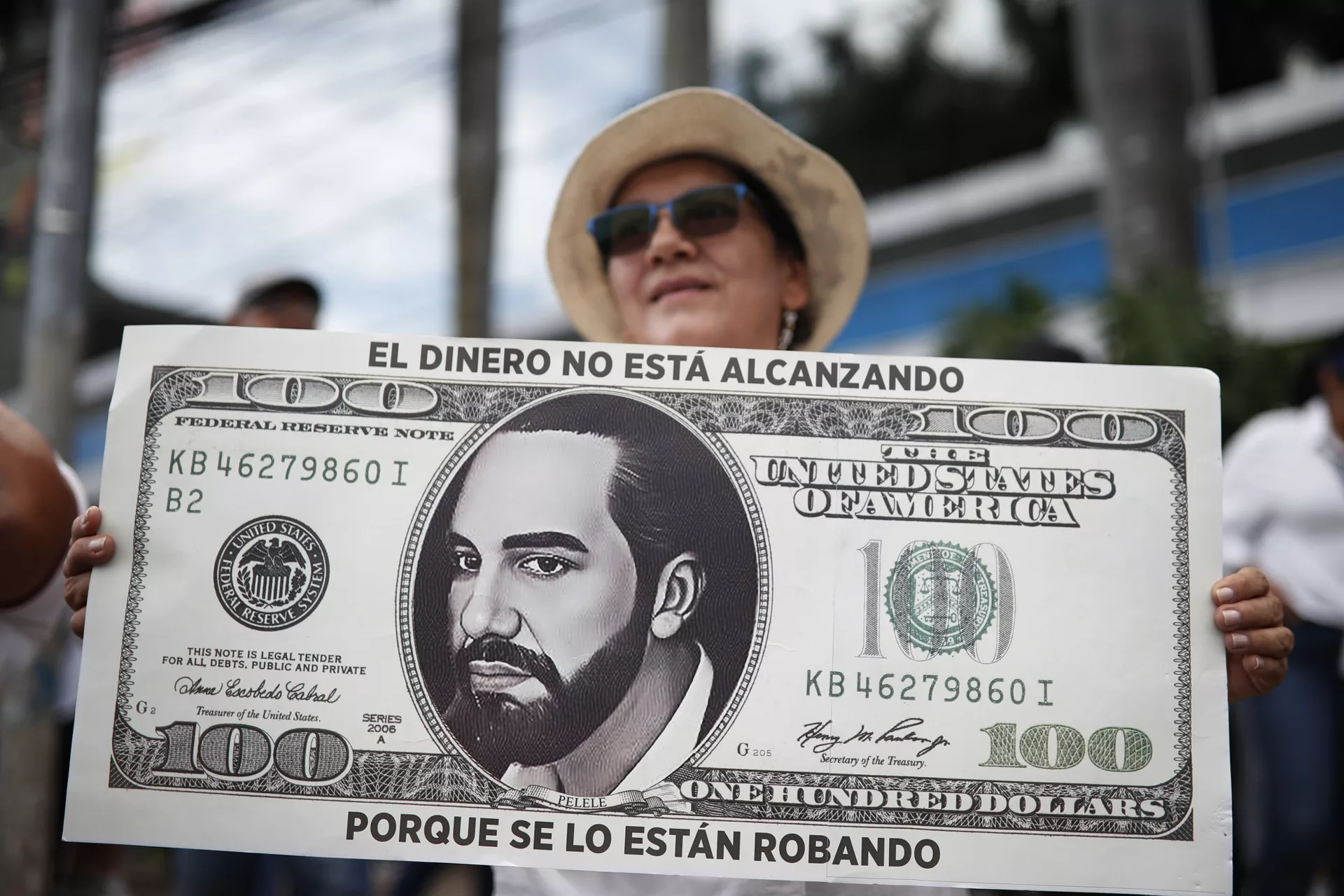The Salvadoran economy “is losing momentum,” said economist and former president of the Central Reserve Bank (BCR), Mauricio Choussy, during an interview on Frente a Frente this Wednesday. Choussy explained that “we are growing less,” and this slowdown is attributed to contracting sectors such as industry and construction.
“The sector that last year contributed to growth being above 3% was construction. Construction has been losing momentum throughout the year, slowing down, and it even turned negative at one point. Now, it’s showing signs of returning to a positive trend, but it has been practically eight months in decline,” he explained.
Data from the BCR indicates that, as of September, the Economic Activity Volume Index (IVAE) grew by 1.81%. Construction grew by 2% this month, but had experienced negative growth in double digits up until August. Out of nine months, five were in the red.
“There was a construction boom related to real estate activities and public investment. The economy has been growing through consumption and investment, and to a large extent due to public investment, not just private investment,” he noted.
Another sector in decline is industry. Choussy points out data indicating this contraction: “imports have mainly been growing in consumer goods, while raw materials are shrinking. This means that industries, including the construction industry, are in the negative, indicating less import of raw materials compared to last year.”
Exports have been falling since last year. “In the case of maquila, the loss of capacity is really dramatic; it has resulted in about 30% fewer maquila exports. And since employment figures are no longer public, which is something I don’t understand, but probably the maquila sector has lost a significant amount of jobs. I estimate it to be around 30%, but it’s a rough estimate,” he said.
The latest recorded data from the sector indicated that by May 2023, the textile and apparel sector had 70,325 jobs. “However, there was a contraction of 179%, meaning 15,283 fewer jobs compared to 2021,” reads the Industrial Ranking report by ASI for this year. In 2022, there were 76,152 jobs in the sector.
On the other hand, remittances are growing at a rate of 1.7%. “We no longer see double-digit or even high single-digit growth. We have a situation where Salvadorans have been in the United States for a long time, and remittance sending is more frequent when they are newly arrived. It has lost some momentum, yet they represent 21% of GDP, which is very important,” he stressed. According to the BCR, the economy could grow between 3.5% and 4% this year.
Economía salvadoreña está desacelerándose, dice Choussy
La economía salvadoreña “está perdiendo fuerzas”, dijo este miércoles el economista y expresidente del Banco Central de Reserva (BCR), Mauricio Choussy en la entrevista Frente a Frente.
Choussy aseguró que “estamos creciendo menos” y esta desaceleración se debe a que hay sectores como la industria y la construcción que se están contrayendo.
“El sector que el año pasado fue el que hizo que el crecimiento fuera arriba del 3 % fue la construcción. La construcción ha estado todo el año perdiendo fuerza, desacelerándose, y esa sí llegó a estar en negativo y ahora da muestras de querer volver a la tendencia positiva, pero ha estado prácticamente ocho meses perdiendo fuerza”, explicó.
Datos del BCR señalan que, a septiembre, el Índice de Volumen de Actividad Económica (IVAE) creció 1.81 %. La construcción este mes creció 2 %, pero había venido hasta agosto con crecimientos negativos de doble dígito. De nueve meses, cinco han sido en rojo.
“Fue un boom de construcción, que tiene que ver con actividades inmobiliarias, tiene que ver con inversión pública. La economía ha estado creciendo por el consumo y por la inversión, y en buena parte por la inversión pública no sólo la inversión privada”, acotó.
Otro de los sectores que ha estado en rojo es la industria. Choussy señala que hay datos que indican esta contracción: “las importaciones han estado creciendo más que todo las de bienes de consumo y las de materias primas no crecen se están contrayendo, eso quiere decir que las industrias, incluyendo la industria de la construcción, están en negativo, o sea, se está importando menos materias primas que el año pasado”.
Y las exportaciones vienen cayendo desde el año pasado. “En el caso de la maquila, es realmente dramático la pérdida que ha habido de capacidad; ha llegado a representar como 30 % menos de exportaciones de maquila. Y como las cifras de empleo ya no son públicas, y esas son de las cosas que yo no entiendo, pero probablemente el sector de maquila ha perdido una cantidad de empleo considerada. Calculo que debe andar alrededor de un 30 %, pero es un cálculo de dedo”, dijo.
Los últimos datos registrados del sector señalaban que, hasta mayo de 2023, el sector textil y confección tenía 70,325 puestos de trabajo. “Sin embargo, hubo una contracción de 179 %, es decir, 15,283 puestos de trabajo menos con respecto al año 2021”, reza el informe del Ranking Industrial de la ASI de este año. En 2022 había 76,152 puestos de trabajo en el sector.
Por otra parte, las remesas están creciendo a un ritmo de 1.7 %, “ya no vemos crecimientos de dos dígitos y ni siquiera de un dígito alto. Ya tenemos una situación que los salvadoreños ya tiene mucho tiempo de estar en Estados Unidos y los envíos de remesas son más frecuentes cuando están recién llegados. Ha perdido un poco de fuerza y estas representan el 21 % del PIB, son muy importantes”, recalcó. Según el BCR, la economía podría crecer este año de 3.5 al 4 %.

